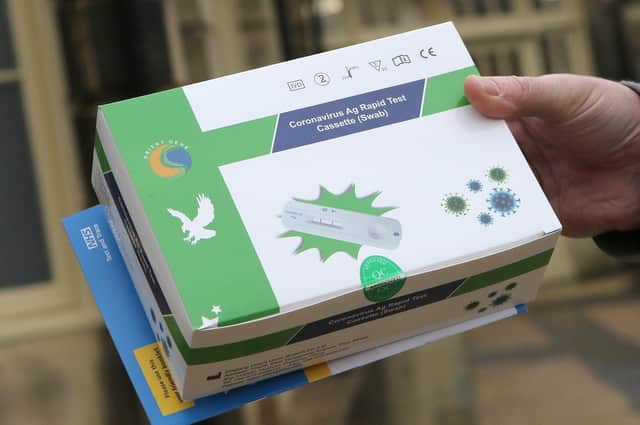Coronavirus infection rates of 2,000 per 100,000 or higher revealed for Hull and East Riding


UK Health Security Agency (UKHSA) figures show the area of Hull with the highest infection rate per 100,000 people in the week up to Saturday, January 1 was Sutton South.
Its rate of 2,880.8 cases per 100,000 people comes 198 new coronavirus cases were recorded there in a week, up by 114 or 135.7 per cent.
Advertisement
Hide AdAdvertisement
Hide AdIn the East Riding, Snaith had the highest infection rate with 2,819.4, with 192 new cases found, rising by 134 or 231 per cent.
It comes as the latest national figures show an average of one in 15 people had coronavirus by the New Year.
Data for the seven days up to Thursday (January 6) show 179,756 cases were recorded, up 29 per cent on the previous week.
Prime Minister Boris Johnson accused anti-vaxxers of spreading misinformation after French President Emmanuel Macron vowed to make life harder for the unjabbed in his country.
Advertisement
Hide AdAdvertisement
Hide AdTheir comments followed an address from Mr Johnson to MPs yesterday where he announced new testing rules but has otherwise stuck to existing restrictions as Omicron continues to fuel surges.
In Hull, areas with infection rates above 2,000 per 100,000 people were largely concentrated in its northern, western and eastern suburbs.
Ings, in east Hull, had the second highest rate in the city with 2,883.7, followed by Kingswood with 2,720.
Bricknell East, University and Newland North, Newington and Southcoates Central and Docks were among the areas all approaching the 2,000 mark.
Advertisement
Hide AdAdvertisement
Hide AdSnaith was followed in the East Riding by Brough with 2,343.9 and Hessle East and Anlaby South, 2,260.2.
The highest East Riding infection rates are currently concentrated in the villages west of Hull.
Snaith, Stamford Bridge and Sutton Upon Dewert close to North Yorkshire and Holderness’ Burstwick and Thorngumbald also above 2,000.
Pocklington, Market Weighton, South Cave, Newbald and Little Weighton, parts of Goole and the area around Howden and Beverley and its surburbs were also approaching 2,000 and above rates.
Advertisement
Hide AdAdvertisement
Hide AdSculcoates was the lowest of only a handful of places in Hull or the East Riding with a rate below 1,000, on 674.6.
Hull’s overall infection rate was 1,757.8 while the East Riding’s stood at 1,676.9.
The areas of Hull and the East Riding with infection rates above 2,000 per 100,000 people:
Hull:
Gipsyville (rate: 2,008.6)
Bransholme West (rate: 2,188.2)
Sutton South (rate: 2,880.8)
Southcoates West (rate: 2,096.6)
Bilton Grange (rate: 2,100.2)
Longhill (rate: 2,319.3)
Ings (rate: 2,833.7)
Kingswood (rate: 2,720)
Derringham (rate: 2,340.1)
East Riding:
Willerby (rate: 2,048.5)
Kirk Ella (rate: 2,050.8)
Hessle West (rate: 2,220.2)
Hessle East and Anlaby South (rate: 2,260.2)
Brough (rate: 2,343.9)
Burstwick and Thorngumbald (rate: 2,001.6)
Stamford Bridge and Sutton Upon Derwent (rate: 2,040.2)
Snaith (rate: 2,819.4)